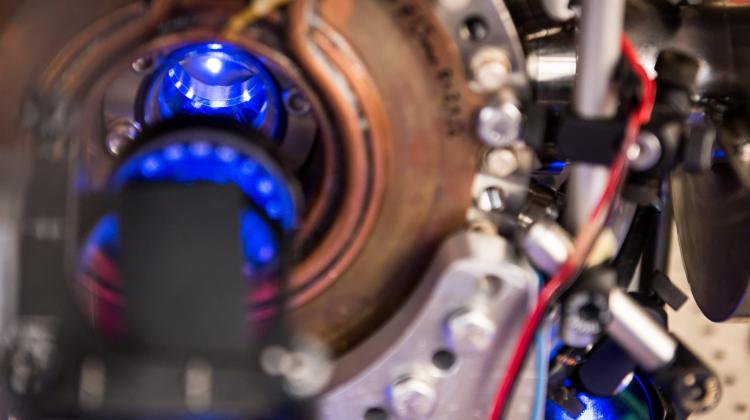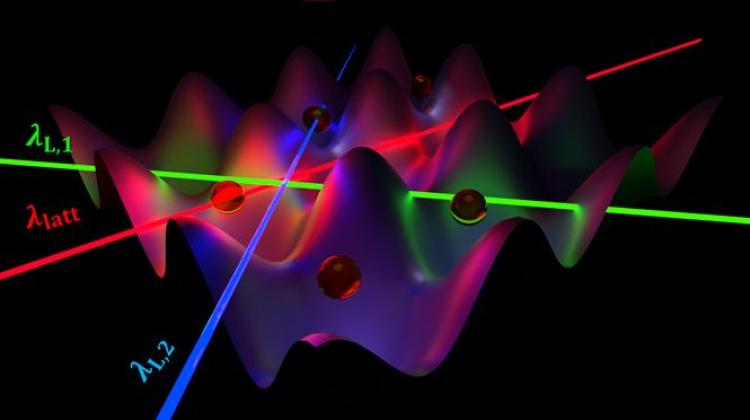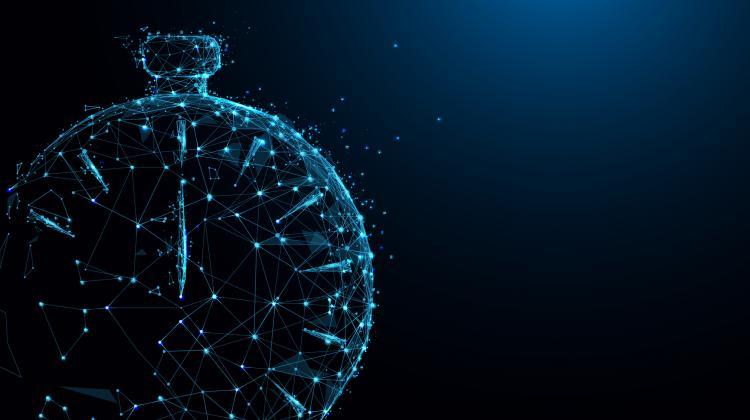What are the most accurate satellite time transfer systems?
 Toruń, 18.02.2015. A fragment of the first Polish optical atomic clock system in the National Laboratory of Atomic, Molecular and Optical Physics, located at the Institute of Physics of the Nicolaus Copernicus University in Toruń. Credit: PAP/Tytus Żmijewski
Toruń, 18.02.2015. A fragment of the first Polish optical atomic clock system in the National Laboratory of Atomic, Molecular and Optical Physics, located at the Institute of Physics of the Nicolaus Copernicus University in Toruń. Credit: PAP/Tytus Żmijewski
An atomic clock does not always work better than a cheap quartz clock. Errors in satellite time transfer used to as accurately as possible synchronize clocks that are far apart may result from different reasons than previously thought, scientists from Wrocław have shown.
Research conducted at the Wrocław University of Environmental and Life Sciences shows that clocks on different continents can be synchronized with an accuracy of one billionth of a second, but even cheaper atomic clocks can be more accurate than hydrogen masers if those are not properly controlled.
The details of the research conducted on the proprietary software developed by Wrocław doctoral candidates and scientists have been published in GPS Solutions(https://doi.org/10.1007/s10291-023-01394-9).
TIME TRANSFER ENABLES SYNCHRONIZATION OF CLOCKS
Time transfer is a term used for the synchronization of clocks that are located not only on different continents, but also in space.
The university’s Professor Krzysztof Sośnica told PAP: “Very accurate clock synchronization is required, for example, for interplanetary observations and satellite measurements based on the speed of light. Time transfer is used for remote control of various devices, in mobile phone networks, vehicle monitoring and even banking transactions.”
There are several methods of time transfer. With smaller distances between the clocks, synchronization can be done via optic fibres. At long distances, the most accurate method is satellite transfer based on GPS, GLONASS and Galileo systems.
Sośnica’ said: "The success of future satellite missions depends on its improvement. Currently, a navigation system for the Moon is being built, there are plans to build a permanent base on the Moon near the South Pole and the Gateway base in lunar orbit. This requires data transmission, positioning and Internet access not only on Earth, but also on the Moon.”
Experts need nanosecond accuracy, otherwise the instruments generate meter-level errors. Until now, it was believed that errors in satellite systems are mainly related to periodicity. The problem with the example of GPS satellites that orbit the Earth with an interval of 12 hours is that they are periodically seen by an observer on Earth in the same place in the sky. These cycles can cause repeating errors - for example, the signal can bounce off the same buildings on a regular basis.
ERRORS ARE ACTUALLY ON THE SIDE OF THE RECIPIENT
Detailed research by scientists from Wrocław has shown that it is not that simple. Errors are repeatable also in clocks with time is based on the Galileo system. Galileo satellites orbit the Earth 17 times per 10 days. The errors observed in these clocks cannot be explained by a 12-hour repeatability, as is the case with the GPS system. Polish scientists show in their paper that the errors in the tested clocks are similar in all satellite systems. Thus, these errors are not due to the repeatability of the satellite system, they occur on the receiver side.
Professor Sośnica said: “We showed how and which atomic clocks provide the highest stability. Exceptionally high stability is achieved by hydrogen masers in Germany, Belgium and Canada. However, it's not about the clock type, because not all masers are that stable. The key to accuracy is the way operators adapt the atomic clock to external conditions: the clock must have thermal and electromagnetic shield to ensure highest quality intercontinental and intracontinental time transfer.”
He added that the atomic clock stability means that the clock best realizes the definition of a second. Many of the basic physical units are based on the measurement of time, but the definition must be real – and atomic clocks that tell how long a second is.
AN ATOMIC CLOCK WORKS LIKE ANY OTHER
In order to work, every clock needs some periodic, cyclically repeating phenomenon. For humans, a natural periodic phenomenon is the cyclical nature of the Sun or the Moon. But to measure time accurately, we need a much more frequent phenomenon. Atomic clocks use the vibrations of atoms, because transitions between energy levels are cyclical. Among the atomic clocks there are rubidium and caesium clocks, and the most accurate - hydrogen masers and optical clocks. A hydrogen maser is, to put it simply, a type of laser, except that it operates in the microwave range instead of using an optical electromagnetic wave, like a laser.
Sośnica said: “Hydrogen masers are perfect for time transfer because they provide very high frequency stability. But they are able to maintain the length of a second in shorter periods, while in longer periods errors appear and have to be corrected. Other atomic clocks, such as caesium ones, provide long-term stability. The definition of a second is based on the oscillation period of caesium atoms.”
There is a network of atomic clocks in the world. Their measurements are averaged. The time determined in this way is called Coordinated Universal Time (UTC). UTC also includes some adjustments to atomic time to adjust it to the actual rotation of the Earth around its axis. In Poland, as in many countries, Coordinated Universal Time is the basis for official time. Our winter time is UTC plus one hour and our summer time is UTC plus two hours.
SATELLITE OBSERVATIONS DEPEND ON TIME TRANSFER
Polish scientists focus their research on satellite observations. According to Professor Sośnica, satellites can operate thanks to on board atomic clocks. The differences in the time measurement sent by the satellite and received time measurement is multiplied by the speed of light. Time measurement in global navigation satellite systems (GNSS) positioning plays a key role, because a 1 ns clock error translates into an error of determining the distance between the satellite and the receiver equal to 30 cm. When the atomic clock on board a satellite fails, the satellite must be shut down.
The scientists from the Wrocław University of Environmental and Life Sciences determined corrections of receiver clocks based on GPS, GLONASS and Galileo data for stations located on different continents and presented the characteristics of various atomic clocks and intra- and intercontinental time transfer accuracy. On the same continents, you can receive signals from the same GPS or Galileo satellites. On different continents, the same satellites are no longer visible. That is why transferring time between continents is particularly difficult. Thanks to corrections from the European Space Agency to correct the satellite clocks and the very high stability maintained by the atomic clocks on board the GPS and Galileo satellites, the highest efficiency of time transfer is possible over very long distances.
Time transfer based on the Galileo system turned out to be even more accurate than the GPS system. However, time transfer based on the Russian GLONASS system is six to eight times worse than the European and American systems. Marcin Mikoś, Kamil Kaźmierski and Krzysztof Sośnica have shown that an atomic clock does not always work better than a cheap quartz clock. The most stable quartz clocks have characteristics similar to the least accurate hydrogen masers. Atomic clocks are very sensitive instruments that require proper control in order to work properly.
The research was carried out using the GNSS-WARP software (Wrocław Algorithms for Real-Time Positioning). The software has been created and developed from the beginning in Wrocław by doctoral candidates and employees of the Institute of Geodesy and Geoinformatics of the Wrocław University of Environmental and Life Sciences.
PAP - Science in Poland, Karolina Duszczyk
kol/ bar/ kap/
tr. RL
Przed dodaniem komentarza prosimy o zapoznanie z Regulaminem forum serwisu Nauka w Polsce.



















